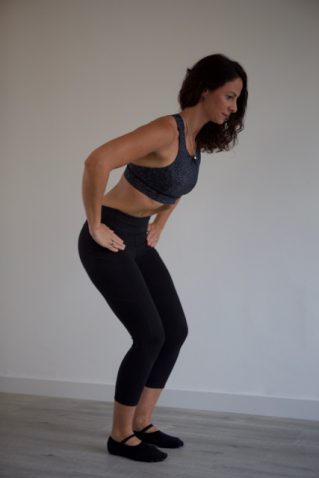Hypopressive Exercise – Core & Pelvic Floor
Kegals not cutting it? Hypopressives strengthen your pelvic floor, core and improve your posture.
If you’ve lived life to the full, worked hard, loved, raised a family, your body may bear the scars – from back pain to a hernia, weak pelvic floor, or even pelvic organ prolapse. These scars can hold you back. They can stop you from exercising, having fun with your family, or even doing everyday things like running for a bus or catching your child when they fall.
Some people say its normal, part of the ageing process – just get some pads! But just because its common, doesn’t mean its normal.

What are Hypopressives?
Hypopressives are a series of exercises, postures and breathing techniques wrapped up neatly into a short, flowing routine that are really easy to fit in to your day. They really are core, pelvic floor and postural training for the 21st century.
Who could benefit?
Everybody can benefit from Hypopressives because they are all about retraining your core muscles to work as they were designed to. However, they can be particularly helpful to people in the following groups:
- Those suffering with pelvic floor disorder such as incontinence, sexual dysfunction or prolapse, or those wanting to prevent any of these from happening.
- If you are looking to strengthen your core, without causing unwanted and problematic pressure to your pelvic floor.
- Women wanting to prepare their bodies for pregnancy, or recover pelvic floor strength after giving birth.
- Anyone looking to decrease their waist size, improve posture, flatten your abdominals, improve circulation or improve athletic performance.
Why are they different to most traditional core and pelvic floor exercise?
The term ‘HYPOpressive’ refers to decrease or reduction in pressure, whereas most traditional exercises, including abdominal exercises are HYPERpressive – they increase internal pressure in our bodies. The thing about pressure though is that it will find your weakest spot. That’s why pressure caused from injury, too much training, or having a baby can lead to urinary incontinence, hernias and even pelvic organ prolapse. And often traditional exercise techniques cannot help, because they rely on conscious muscle contraction.
The core is designed to work at a subconscious level, so it can be effective throughout daily life, not just when you are exercising. It needs to kick into action if you have to suddenly run for a bus, or swoop in to pick up your child when they fall over. It needs to work without you thinking about it. HyPOpressive exercises decrease or reduce internal pressure, to the thoracic, abdominal, and pelvic areas of the body.
They re-programme the core muscles, which are vital to managing pressure both consciously and subconsciously, and they increase their resting tone and involuntary function. In other words, the core, including the pelvic floor, starts to work again as it was designed to – without you having to think about it.
How can I learn Hypopressives for myself and what will be required of me?
Well firstly it’s important to know that sadly it can’t be learnt from a video due to it’s simple but very technical nature. It’s important to learn this from a qualified Hypopressives instructor. The protocol initially is to practise daily for 10-15 minutes to build a habit and to see results quickly, frequency of practise can then be reduced. On average it takes roughly 3-4 hours of 1-1 training to learn the level 1 routine and master the breathing, ideally lessons would be roughly spread out 1 week apart.
Do I need any special equipment?</h3
Not a sausage! That is part of the beauty of these exercises, all you need is yourself and enough floor space to lay down with your arms and legs stretched out.
They are relatively new to the UK but were originally developed in Spain by Marcel Caufriez as a breathing technique to be used in a clinical setting to help post-natal women recover from pelvic floor dysfunction (incontinence, prolapse etc). They have since developed in to a fitness program that helps prevent and restore pelvic health and they are now used by both men and women of all ages for many reasons. They are now starting to be used by the NHS in some parts also.
Who are they not suitable for?
Hypopressives need to be modified if you are pregnant. You should not practice if you suffer from hypertension, or have an inguinal or umbilical hernia. We may still be able to help you though, so do speak to us if you have questions.
Do they really work?
Well don’t take our word for it, you should always do your research but have a look for testimonials on the internet. At the bottom of the page you will find just some available on youtube.
I have been offered surgery, what should I do?
Hyperpressive trainers have worked with many who have been told that serious and risky surgical procedures are their only option, and yet Hypopressive exercises have seen their prolapse and other problems eliminated. It’s no exaggeration to say that Hypopressives can be life changing! ‘First do no harm’ is the Hippocratic Oath that doctors take so they should be in full support of non-invasive methods such as hypopressives being tried prior to non-emergency medical procedures. It is your body and you are entitled to ask for surgery to be postponed.
Nikki Caputa & Richard Peterson are our master trainer in the UK, for further information you can click here.
